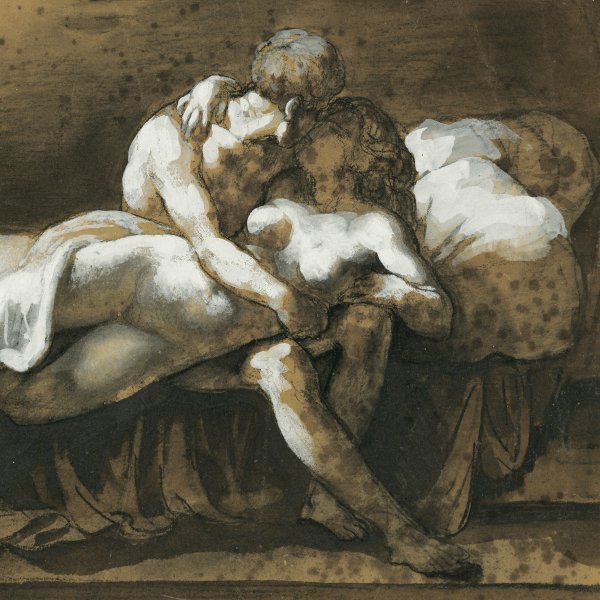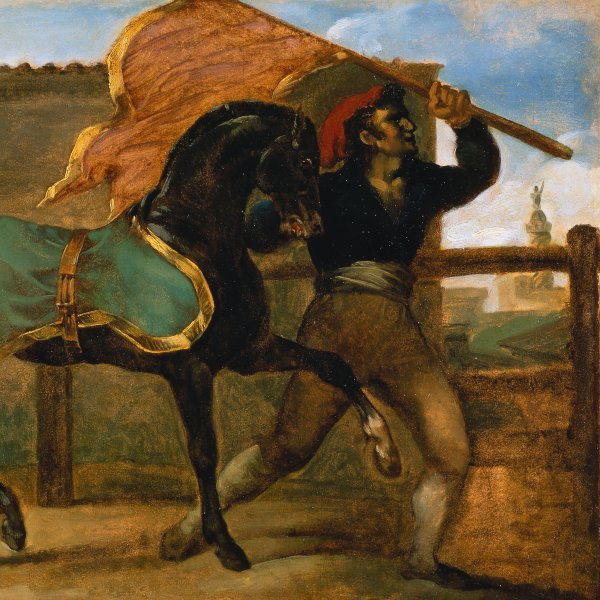Théodore Géricault
Rouen, 179-Paris, 1824
Géricault was born in 1791 into a wealthy family in Rouen that moved to Paris some years later. He received his first, short-lived art classes in Paris in the studios of Carle Vernet and Pierre Guérin. In 1811 Géricault decided to be responsible for his own training and began to copy works by the Old Masters in the Louvre. Aged only twenty-one and almost completely selftaught, in 1812 Géricault presented his first major work at the 1812 Salon, entitled Officer of the Imperial Guard on Horseback (Musée du Louvre, Paris). Over the following years Géricault continued copying and in 1814 he again showed a work at the Salon, entitled The Wounded Cuirassier (Musée du Louvre). This more elaborate composition was not as well received as the first one.
Having failed to gain a prize in the Prix de Rome, Géricault decided to travel to Italy at his own expense. Once there he was particularly impressed by the works of the Italian Renaissance artists, above all Michelangelo, and by Rubens. During his stay in Rome Géricault executed a series of paintings of the horse race known as the Corso dei Barbieri.
Géricault’s career was a short one, lasting just over ten years but he produced a large and significant body of work. In 1819 he exhibited his most important work, The Raft of the Medusa (Musée du Louvre), at the Salon in Paris. This huge canvas depicts the aftermath of a shipwreck that had taken place three years before and had captured the public imagination. Géricault focused on human suffering and deployed an intense realism, which together made this work a masterpiece that was enormously influential for both Romantic and Realistic painting.
Géricault died in 1824 after a long illness that prevented him from working on large-scale paintings in the last years of his life. His last paintings were a series of portraits of sitters suffering from mental illnesses. They remained unknown to art historians for many years and are works of enormous realism and expressive force.
Having failed to gain a prize in the Prix de Rome, Géricault decided to travel to Italy at his own expense. Once there he was particularly impressed by the works of the Italian Renaissance artists, above all Michelangelo, and by Rubens. During his stay in Rome Géricault executed a series of paintings of the horse race known as the Corso dei Barbieri.
Géricault’s career was a short one, lasting just over ten years but he produced a large and significant body of work. In 1819 he exhibited his most important work, The Raft of the Medusa (Musée du Louvre), at the Salon in Paris. This huge canvas depicts the aftermath of a shipwreck that had taken place three years before and had captured the public imagination. Géricault focused on human suffering and deployed an intense realism, which together made this work a masterpiece that was enormously influential for both Romantic and Realistic painting.
Géricault died in 1824 after a long illness that prevented him from working on large-scale paintings in the last years of his life. His last paintings were a series of portraits of sitters suffering from mental illnesses. They remained unknown to art historians for many years and are works of enormous realism and expressive force.





